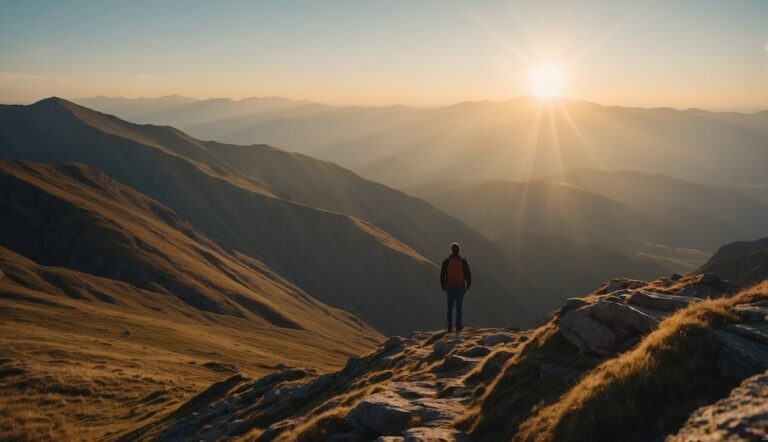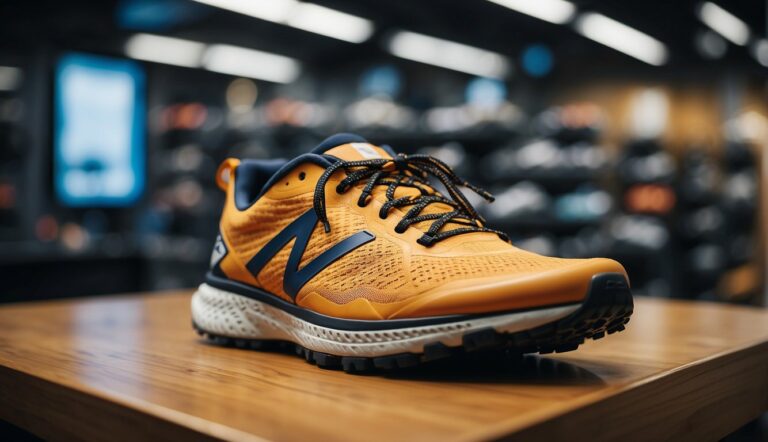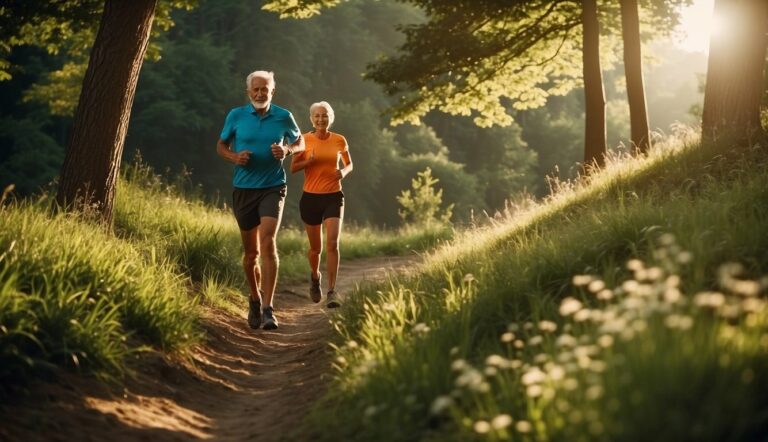Trail Running Photography: Tips for Stunning Adventure Shots
Trail running combines the thrill of running with the serene beauty of the outdoors. As a UESCA certified running coach with ample experience on the trails, I’ve seen countless runners eager to capture the essence of their journey through photography. A camera, whether a high-end DSLR or a smartphone, is a powerful tool to document the vibrant landscapes and dynamic action of trail running.

Achieving great photos while trail running isn’t just about having the right equipment; it’s also about understanding the basics of composition and lighting. I always advise runners to look for the golden hours of dawn or dusk to capture the soft, diffused light that brings out the vivid colors and shadows of nature. Photos taken during these times tend to have a warm, inviting quality that can highlight a runner’s experience.
When photographing runners, it’s important to consider the background and how it complements the subject. The contrast of a lone runner against a sweeping vista or an athlete’s silhouette cresting a hill can tell a compelling story. Simple techniques like framing the subject creatively or using negative space can add depth and interest, drawing the viewer’s eye directly to the runner.
Essential Gear for Trail Running Photography
When capturing the beauty of trail running, using the proper gear will enhance the quality and impact of your photos. Knowing what equipment to select and how to use it will make a significant difference.
Choosing the Right Camera and Lenses
Camera: For trail running photography, a camera that offers manual settings such as adjustable shutter speed, aperture, and ISO is vital. Having a continuous shooting mode, or “burst” mode, can be exceptionally advantageous for capturing multiple images in quick succession to ensure you get that perfect stride shot. A DSLR or mirrorless camera with these capabilities would be my go-to choice.
- Lenses: Select a variety of lenses to accommodate the diverse terrain and lighting conditions you’ll encounter. A wide-angle lens is paramount for expansive landscapes, while a telephoto lens is beneficial for zooming in on distant runners. A standard zoom, such as a 24-70mm lens, is versatile for general use.
| Lens Type | Use Case |
|---|---|
| Wide-Angle | Expansive landscapes, larger scenes |
| Telephoto | Capturing distant subjects |
| Standard Zoom | Versatile, everyday scenarios |
Supporting Accessories: Tripods and Monopods
Tripods: A sturdy tripod is crucial for low-light conditions where longer exposures are necessary and for videography, where stability is key. Tripods ensure sharp images by stabilizing the camera, especially important when using telephoto lenses that magnify the effects of camera shake.
Monopods: Monopods offer a compromise between stability and mobility, providing support for the camera while remaining lightweight and quick to reposition. This makes them ideal for situations where I need to move swiftly alongside runners, tracking their motion.
- Use Case Comparison:
| Accessory | Mobility | Stability | Best Use Scenario |
|---|---|---|---|
| Tripod | Low | High | Long exposures, static compositions |
| Monopod | High | Moderate | Moving with runners, flexibility |
Utilizing the right camera and lenses, combined with the support of tripods and monopods, will greatly enhance your trail running photography, capturing the essence of the sport in every frame.
Techniques for Capturing Dynamic Running Photos

In trail running photography, the devil is truly in the details. My approach focuses on fine-tuning camera settings and creatively engaging with the environment to produce compelling images.
Mastering Shutter Speeds and Aperture
Shutter Speed: Capturing the motion of a runner without blur requires a fast shutter speed. I typically use a speed of 1/500 second or faster, providing crisp images even when the runner is sprinting.
| Shutter Speed | Effect on Runner’s Motion |
|---|---|
| 1/250 second | Minimal motion freeze |
| 1/500 second | Sharp motion freeze |
| 1/1000 second | Ultra-sharp motion freeze |
Aperture: Balancing the shutter speed, I adjust the aperture for proper exposure. A wider aperture (lower f-stop number) helps to focus on the runner and blurs the background, which adds depth to the photo.
Utilizing Composition Rules and Perspectives
Composition: Adhering to the rule of thirds ensures the runner isn’t just centered but dynamically positioned within the frame. I often place the runner at one of the intersecting points in the grid to create a more engaging composition.
Perspective: A simple change in angle can completely transform a photo. I might shoot from a low angle for a sense of grandeur or from above to showcase the trail’s undulations.
Understanding Focus and Depth of Field
Focus: Ensuring the runner is in sharp focus is essential. I use autofocus with tracking to maintain clarity on the runner no matter their speed.
Depth of Field: A shallow depth of field, achieved by a wider aperture, draws the eye to the runner and adds a professional look to the photo. This technique allows the background to softly fade, emphasizing motion and the runner’s form.
| Aperture Size (f-stop) | Depth of Field |
|---|---|
| f/2.8 | Shallow |
| f/4 | Moderately shallow |
| f/8 or higher | Deep, more of the scene in focus |
By controlling shutter speed, composition, and focus, I capture the essence and energy of trail running, creating dynamic and vibrant photographs.
The Runner’s Environment: Shooting in Nature

When capturing the essence of trail running photography, the environment is as much a character as the runner. My focus combines the dynamism of the athlete with the stillness of nature, using lighting and the landscape itself to add depth and emotion to each shot.
Working with Natural Lighting and Weather
I prioritize the golden hours of sunrise and sunset for the soft, diffuse light they offer, reducing harsh shadows and highlighting the textures of nature. In unpredictable weather, I embrace the challenge, using the contrast of lighting to add a dramatic effect—sunlight piercing through clouds or a lone runner against the backdrop of an impending storm. Here’s a brief guide on utilizing natural light:
- Golden Hours: Best for soft lighting and long shadows, especially beneficial in mountains or grassy fields.
- Overcast Conditions: Can create uniform lighting, ideal for capturing the intricate details of trees and trails without the distraction of heavy shadows.
- Direct Sunlight (midday): Often too harsh, but can be used creatively to play with contrasts and silhouettes.
Composing with Landscapes and Background
In composing a shot, I pay close attention to the arrangement of elements within the frame. By positioning the runner off-center and using the rule of thirds, I create a balanced composition that draws the eye across the picture. I incorporate elements such as mountains, grass, and trees, using them as a majestic backdrop that showcases the runner’s connection with nature. Below is a simple compositional guide:
- Foreground: Include interesting textures or patterns in grass/clumps to lead the viewer’s eye to the runner.
- Midground: The runner should be prominently featured but remain integrated within the environment.
- Background: Mountains, trees, and dramatic skies can serve to frame and encapsulate the scene, adding grandeur and context.
Trail Running Photography Ethics and Practices
Photographing your trail running adventures can be exhilarating, but it’s essential to do so responsibly. Following ethical guidelines ensures the trails remain pristine and the enjoyment of the outdoors is shared by all.
Minimizing Environmental Impact
When capturing the beauty of trail running, the environment should be the top priority. As a UESCA certified running coach, I urge you to follow the Leave No Trace principles:
- Stay on Designated Trails: Keep to established paths to avoid damaging flora.
- Dispose of Waste Properly: Pack out all batteries, memory cards, and any trash.
- Leave What You Find: Resist the urge to move rocks or branches for a better shot.
Here is a simple checklist to follow:
| Do: | Do Not: |
|---|---|
| Use existing trails and paths | Venture off-trail causing erosion |
| Keep photography gear to a minimum | Leave any form of waste behind |
| Capture images without altering the scene | Disturb wildlife or natural habitats for a shot |
Respecting Fellow Runners and Wildlife
The wilderness is a shared space, and as a trail runner, showing respect to others is a cornerstone of the sport’s culture.
- Be Considerate of Others: Notify fellow runners if you’re taking a photo where they may be in frame.
- Observe Wildlife from a Distance: Use a zoom lens to photograph animals without disrupting their natural behavior.
Keep in mind these key points:
| Consideration: | Practice: |
|---|---|
| Runners’ privacy and right to enjoy the trail | Ask for consent to photograph; avoid using flash |
| Wildlife’s well-being | Do not feed or approach wildlife for a photo opportunity |
By adhering to these ethics and practices, my photography aids in conserving the trail experience for future generations and respects the shared enjoyment of the outdoors.
Post-Processing and Sharing Your Trail Running Photos

After capturing the raw beauty of your trail runs, post-processing can turn a good photo into a great one. Cropping is essential; it helps to clean up any clutter and focus the viewer’s attention. Use a simple editing tool to crop out unnecessary parts and highlight the runner’s motion. Be careful not to crop too tightly, as some background context is important for telling the story of the run.
Adjusting the exposure and color balance can bring out the details and enhance the natural beauty of the outdoors. Remember, the goal is to make the memory stand out, not to alter it significantly. Apps available on iOS devices, like the built-in Photos app, can be a straightforward option for quick edits.
Sharing your photos is all about making a connection. Use social platforms or a personal gallery on your website to display your work. For a higher quality video experience, consider sharing on platforms like Vimeo, which tend to support better video resolutions and less compression than other social media sites.
Lastly, ensure your photos and videos reflect the essence of trail running photography. They should evoke the emotion and exhilaration of being one with nature. Keep them authentic and invite viewers into the moment you’ve captured.
| Quick Tips for Sharing Trail Running Photos |
|---|
| – Crop wisely: Keep a balance between subject and scenery. |
| – Edit lightly: Enhance, don’t alter the memory. |
| – Pick the right platform: Choose based on quality and reach. |
| – Stay true: Your photos should reflect the genuine experience of the run. |
Keep these tips in mind and your photos will not only showcase the sport but also tell the unique story of each run.

